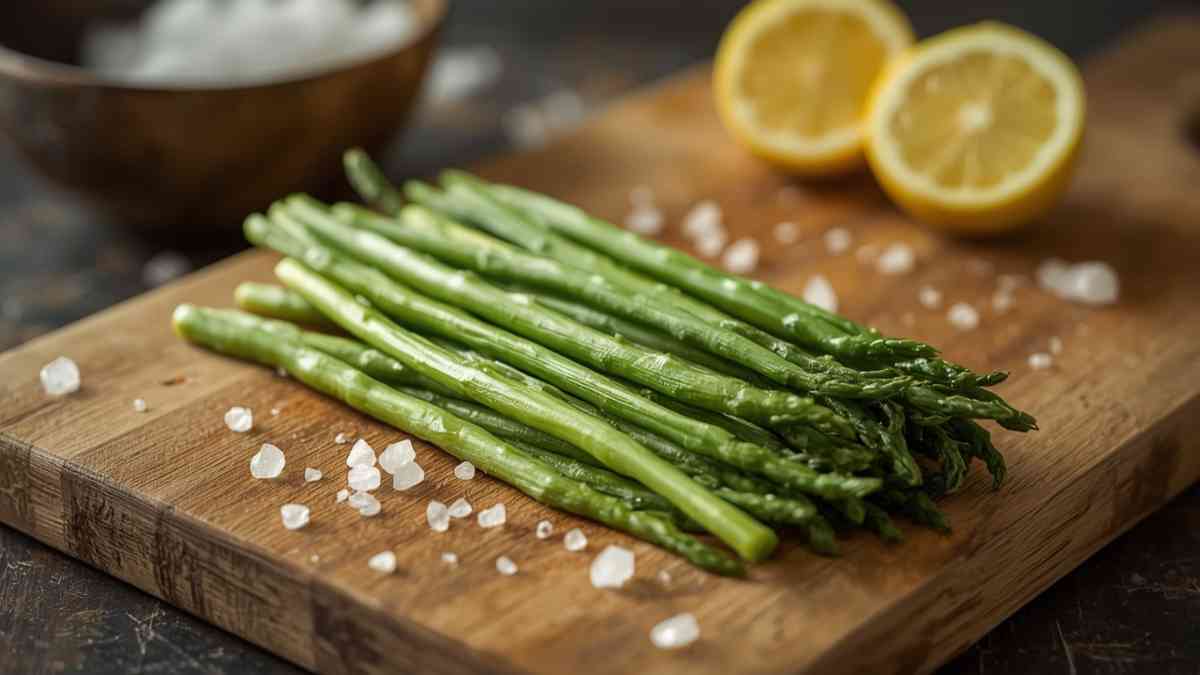How to Cook Samphire at Home Like a Pro Chef

Wondering how to cook samphire? This salty, vibrant coastal plant can be transformed into a gourmet side dish in minutes. Whether you prefer it steamed, sautéed, or blanched, samphire is incredibly easy to prepare and pairs beautifully with seafood or fresh summer meals. In this article, you’ll learn how to cook samphire at home like a pro chef with step-by-step tips and serving ideas.
Introduction to Samphire
Samphire, sometimes referred to as “sea asparagus” or “sea beans,” is a crisp, salty green that grows along coastal regions and marshlands. Packed with natural flavor, it has long been a favorite in gourmet kitchens and traditional seaside cooking. Today, it’s easier than ever to find it at fishmongers, markets, or even in your local supermarket during summer.
If you’ve never cooked samphire before, don’t worry. It’s one of the easiest vegetables to work with—and you don’t need fancy tools or ingredients. With just a few basic steps, you can serve up a flavorful dish that feels like it belongs in a restaurant.
What Does Samphire Taste Like?
Samphire has a natural saltiness, a crisp bite, and a slight mineral note—think of it as the green vegetable that tastes like the ocean. When cooked right, it holds its crunch while softening slightly, adding both texture and flavor to your plate.
This distinctive taste makes it ideal for pairing with fresh seafood, buttery sauces, or simple citrus dressings. But before pairing it, you need to know how to cook samphire to bring out its best qualities.
How to Prepare Samphire Before Cooking
Before cooking samphire, there are a few basic steps to follow to make sure it’s clean and ready:
-
Rinse thoroughly: Even store-bought samphire can have traces of sand or grit. Rinse it under cold water and gently rub the stems.
-
Trim the ends: Remove any tough, woody parts near the base.
-
Inspect for roots or old stems: Discard any pieces that look discolored or dry.
That’s it. No peeling, chopping, or soaking is needed.
Essential Cooking Methods
There are several simple methods for cooking samphire at home. Here’s how to cook samphire using four popular techniques:
1. Blanching
Best for: Preserving bright color and crisp texture.
-
Bring a pot of water to a rolling boil. Don’t add salt—samphire is naturally salty.
-
Drop the samphire in for 1–2 minutes only.
-
Remove with tongs and plunge into a bowl of ice water to stop the cooking.
-
Drain well and serve warm or cold.
Pro Tip: Toss with a bit of olive oil and lemon juice for a simple, refreshing side dish.
2. Steaming
Best for: Retaining nutrients and soft texture.
-
Place samphire in a steamer basket over boiling water.
-
Cover and steam for 3–4 minutes.
-
Test with a fork; it should be tender but still firm.
Pro Tip: Add a dab of unsalted butter or garlic oil for extra flavor.
3. Sautéing
Best for: Infusing flavor with oil or garlic.
-
Heat a small amount of olive oil or butter in a pan over medium heat.
-
Add samphire and toss for 2–3 minutes.
-
Optional: Add crushed garlic or chili flakes for a kick.
Pro Tip: This method gives it a glossy finish and pairs beautifully with grilled fish or prawns.
4. Microwaving
Best for: Quick cooking with minimal cleanup.
-
Place rinsed samphire in a microwave-safe bowl with a splash of water.
-
Cover with a lid or plate.
-
Microwave on high for 1.5–2 minutes.
-
Drain and dress as needed.
Pro Tip: Great for meal prep or when you’re short on time.
How Long Should You Cook Samphire?
Because samphire is so delicate, cooking time is short—generally under 4 minutes. Overcooking makes it mushy and too salty, so keep a close eye on it.
A quick blanch, steam, or sauté is all it needs. You want it bright green, just-tender, and still a bit snappy when you bite into it.
What to Serve with Samphire
Once you’ve mastered how to cook samphire, the next step is serving it well. This green goes far beyond just a garnish:
Pairings That Shine:
-
Grilled salmon or sea bass – the saltiness of samphire enhances the rich flavor of oily fish.
-
Poached eggs – lay a few stalks of warm samphire under a poached egg on toast.
-
New potatoes and butter – a classic pairing that feels like summer on a plate.
-
Pasta with lemon and olive oil – toss cooked samphire into your favorite spaghetti or linguine.
Seasoning Tips
Since samphire is naturally salty, be cautious with added salt. Instead, use these ingredients to balance or enhance its flavor:
-
Fresh lemon or lime juice
-
Cracked black pepper
-
Unsalted butter or olive oil
-
Fresh herbs like dill, parsley, or thyme
-
A splash of white wine for deglazing when sautéing
Common Mistakes to Avoid
1. Adding salt to water – Samphire brings its own salt. No extra is needed.
2. Overcooking – Soft samphire loses its appeal. Aim for just-tender.
3. Skipping the rinse – It might look clean, but sand or grit can hide in stems.
4. Not trimming the tough bits – Woody ends can ruin the texture.
How to Store Fresh Samphire
Fresh samphire is best eaten the same day, but it can last a bit longer if stored properly:
-
Wrap in a damp paper towel and place in a container in the fridge.
-
Use within 2–3 days for best flavor and texture.
-
Do not freeze raw samphire. If you must freeze, blanch it first.
Samphire in Different Cuisines
While samphire is popular in British coastal cooking, other cultures use it in unique ways:
-
Mediterranean dishes often include samphire with olive oil, garlic, and seafood.
-
Korean cuisine uses similar sea greens in pickles or as banchan (side dishes).
-
Nordic recipes might serve it cold with smoked fish and potatoes.
Is Samphire Good for You?
Yes, samphire is a nutritional powerhouse. It’s:
-
Low in calories
-
Rich in minerals like iodine and magnesium
-
A natural source of antioxidants
-
Great for digestion due to fiber content
It’s especially beneficial for those looking to boost their mineral intake without added sodium from processed foods.
A Chef’s Tip for Impressing Guests
If you’re entertaining, cook the samphire just before serving. Its bright green color and sea-fresh aroma will elevate your presentation. Place it beside grilled shrimp, scatter some fresh herbs, and finish with lemon zest—your guests will think you’ve trained in a coastal kitchen.
Conclusion
Learning how to cook samphire is a small skill that makes a big impact. With its bold flavor, simple preparation, and impressive plate presence, this humble coastal green deserves a spot in your regular rotation.
Whether you choose to steam, sauté, or simply blanch and dress it, the key is not to overcomplicate things. Let the freshness and flavor of samphire shine through. Once you try it, you’ll wonder why you didn’t start cooking it sooner.
Ready to elevate your cooking? Try samphire in your next meal!



